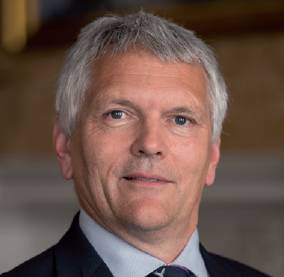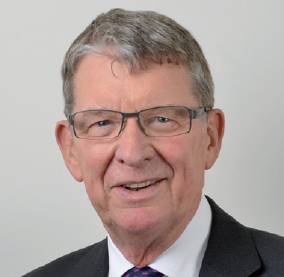Message from RAeS
Message from RAeS
Sharp-eyed readers of the last edition of AEROSPACE will have noted that due to the ongoing Covid-19 situation and the resulting exceptional circumstances, the Trustees have determined that the ‘Presidential-Clock’ is stopped. Consequently, I have the honour of being the first President since the 1940s to have two consecutive years in office. I hope that by the time my ‘second innings’ has finished, we will be well-over the worst of the effects of Covid-19 and that the aerospace and aviation industries will be on the long road to recovery.

Looking back at my first AEROSPACE Presidential Message in June 2019, I see that I wrote: “I often tell the undergraduates that I teach that this is a good time to start a career in aerospace or aviation. There are many challenges that need to be addressed, for aviation this is most notably the reduction of the environmental impact; this goal will be achieved through the development of new technologies, configurations and modes of operating air-vehicles.” While these environmentally-focused technical challenges are still going to exist for the foreseeable future (See ‘Boarding flight 2050, p 26), much effort will be required to ensure that air travel can become safe once again for the travelling public. Given the seismic reductions in passenger flights and the loss of jobs across the industry, it is likely that government-funded programmes will be required world-wide to help achieve these goals.
In the same article, I also mentioned my three Presidential themes: facilitation of the technologies needed to develop the 21st century aerospace industry, getting the universities more involved with the Society, and more work on attracting youngsters into engineering. These are all still very worthwhile aims post-Covid and I look forward to continuing with them during the next year. They also fit in neatly with the Society’s key themes of The Future of Flight, Tomorrow’s Aerospace Professional and Climate Change & Sustainability.
The ongoing Covid situation has provided many challenges to the university sector due to the curtailment of the current academic year and the need to find alternative means of finishing teaching, assessing students and meeting professional accreditation requirements. I recently chaired a meeting between 25 of the universities that offer RAeS-accredited aerospace degrees and the Society’s Accreditation staff to discuss best practice in meeting these challenges, not only for the current academic year but also for the 202021 session which is likely to be ‘virtual’ to a certain extent. A lively discussion resulted with many good ideas being voiced. I hope to run a similar session in a few months’ time. This meeting was a good example of the Society facilitating discussion between interested parties on a pressing topic and determining a way forward.
As a Fellow of both the RAeS and the AIAA, I was very pleased to be able to participate in a signing ceremony for a new Memorandum of Understanding between the AIAA and the RAeS, the two leading membership aerospace organisations. Over 200 people from across Europe, the US and Australia were able to tune in to see John Langford, President of the AIAA, and myself sign the MoU. The MoU will enable both Societies to co-operate to our mutual benefit in the areas of learned activities, information and digital services, and awards, to develop opportunities for tomorrow’s aerospace professionals as we embrace the future of flight and strive to reach new frontiers, while also tackling the hard questions on climate change and sustainability and, of course, the effects of the Covid-19 outbreak. I look forward to helping to develop further collaborative activities between the two societies in the near future.
A good example of potential cross-Atlantic activities is the webinar that is being organised by Bill Voss, who leads the RAeS Washington DC Branch, that will involve a ‘Transatlantic Conversation’ between leading aerospace figures from the US and UK about the current state and future of aerospace research. Our Corporate Partner activities and also the Specialist Groups, are busy planning programmes for a future that will be digitally-enabled for a long time to come and I encourage all of our Branches to start organising for the forthcoming 2020-2021 season using similar platforms. It would be good to hear what you are planning and, as I will not be able to visit the Branches for the foreseeable future, please contact me on president@aerosociety.com to explore whether I can tune into your events personally or perhaps investigate whether lectures or other activities can be shared among all the Society’s members.
